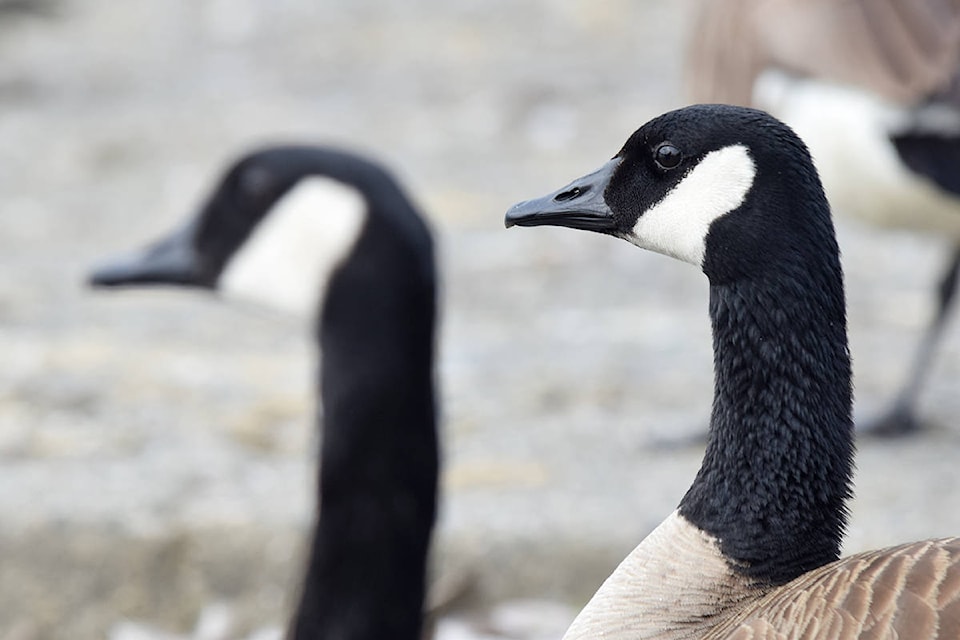I remember one of life’s sensory pleasures, walking barefoot on the mudflats at Hopewell Rocks Park at the top of the Bay of Fundy, feeling the sun-warmed red mud squishing up between my toes.
It was almost sacramental — like having my feet gently massaged by Jesus’ hands in the Upper Room.
It’s much less pleasant when the stuff squishing between one’s toes is goose poop.
Unfortunately, poop is what Canada Geese are best known for.
They be-fowl (pun, sorry) parks and golf courses and beaches with little pretzels of grey-green excrement.
It’s actually quite good fertilizer – chemically, 2-4-2 – but it’s almost impossible to walk through goose-populated areas like Vancouver’s Lost Lagoon in Stanley Park without getting some on your shoes.
As a result, Canada Geese have become undesirable.
Having realized they have little to fear from human presence, and much to gain from human food waste, many geese no longer migrate south. They’ve become permanent residents.
The City of Vernon decided to cull its resident geese. Kelowna and Vancouver prefer to addle goose eggs, shaking the eggs to kill the unhatched goslings within. Much like aborting a human fetus, I suppose.
U.S. cities have rounded up excess migrants and euthanized them – typically, by asphyxiation with automotive exhaust. The same method, it occurs to me now, that Robert Latimer used to end his daughter Tracy’s life, for which he received a 10-year prison sentence.
I’m almost surprised that the Trump administration didn’t slap a punitive tariff on migratory Canada Geese.
And yet Canada Geese have a number of admirable characteristics that we humans might emulate.
They are monogamous, for example. They mate for life. If one dies, the other may seek a new mate. Otherwise, they are totally faithful to each other.
When flying in that famous V-formation, they take turns providing leadership.
They share household duties. Both parents feed their young. Both guard the nest. Both will vigorously defend their offspring against any perceived threat.
One time, leading a group of Scouts through a marsh, our group came too close to a nest. A black-and-grey apparition exploded from the reeds. It rushed at us, neck extended, hissing, beak snapping, six-foot wings flapping, ready to beat us to a pulp.
We fled.
When Hiram Walker ran a distillery here in Lake Country, they used guard geese, not guard dogs. Personally, I think I’d rather face a snarling dog. At least it can only attack at ground level.
I suspect that even a bear would back away from a gaggle of geese all attacking at once.
I remember being in Hazelton, in northern B.C., one spring when migrating geese returned to their summer breeding grounds. I could hear the geese, long before I could see them – a cacophony of squawks blending together into a single unbroken tone.
And then they came over the height of Rocher de Boule, the massive rock mountain that dominates the Skeena valley. Hundreds of them. Thousands of them. They spread across the sky like nodes in a net.
I held my breath in awe.
And I rejoiced. In what, for what, I don’t know. Perhaps just being Canadian.
My soul lifted towards them, with them. The geese had come home.
Jim Taylor lives in Lake Country: rewrite@shaw.ca
READ MORE: Vernon walkers bring smiles to neighbourhood
READ MORE: One year later: The Hearts of the Okanagan
@LC_Calendar
newsroom@lakecountrynews.net
Like us on Facebook and follow us on Twitter.
